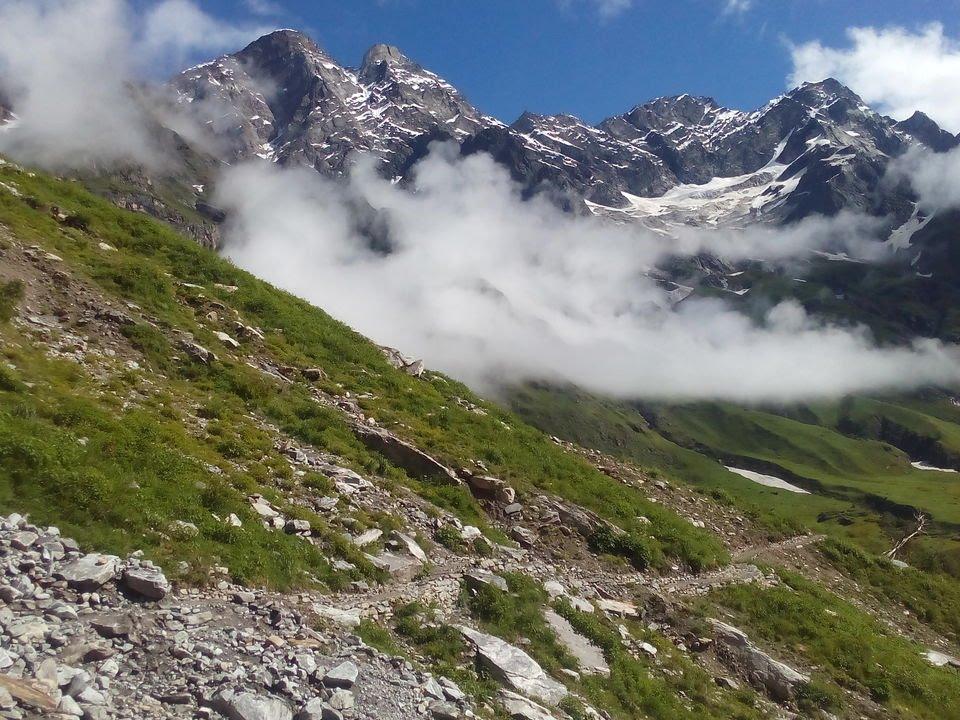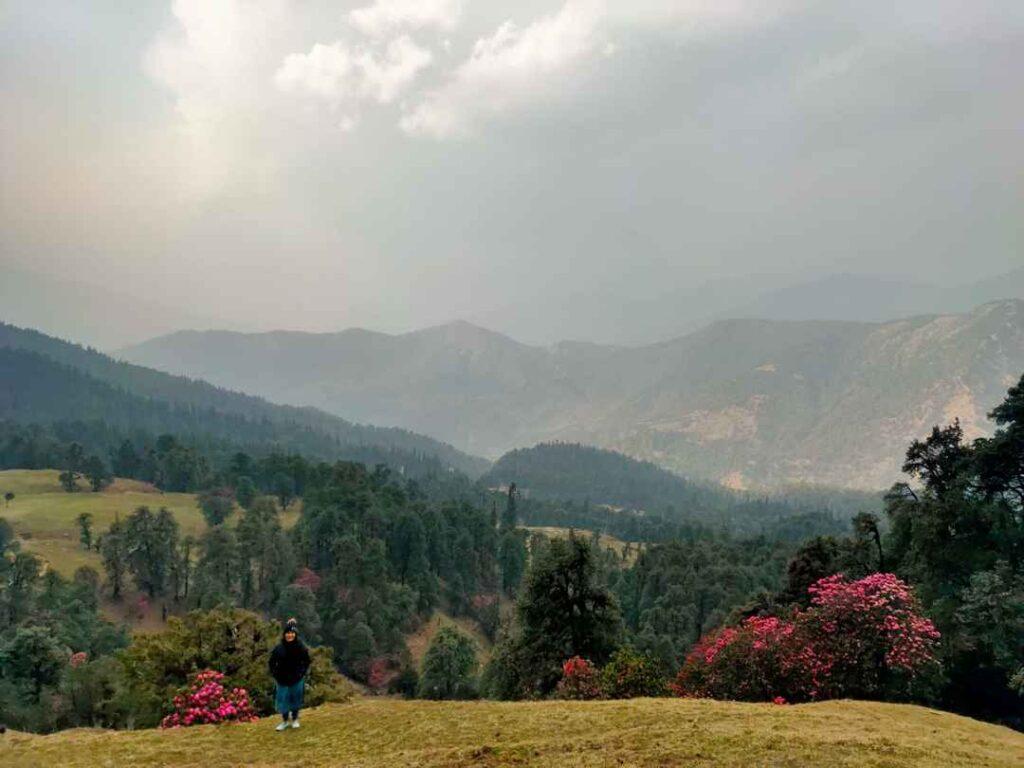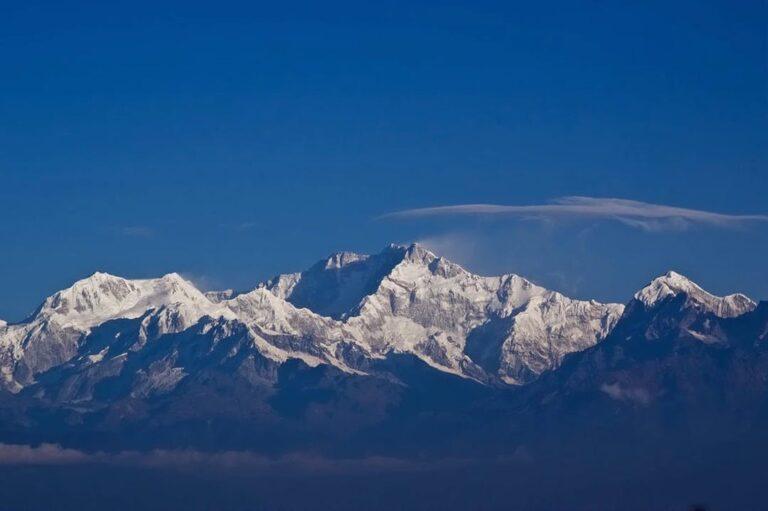Toughest Peaks of Indian Himalayas
India is a country filled with diverse terrains including valleys, mountains, rivers, plateaus, grasslands, and many more. Amongst all of these, the name that shines the brightest is the mighty Himalayan ranges. This ancient natural barrier has been the first choice for all adventure enthusiasts and nature lovers. At Kashti Adventures, we feel the sense of accomplishment that comes from reaching the summit of an otherwise unfathomably dangerous mountain, is immense! So, here are the top 3 toughest peaks of the Himalayas, that’ll give you all the rumblings of butterflies in your stomach.
Kanchenjunga
It is the third highest peak in the world. You will be astonished to know that Kanchenjunga is actually a massif that consists of several peaks. Divided into four summits namely, the Kanchenjunga West (8505 m), Kanchenjunga South (8494 m), and the Kangbachen (7903 m), this massif is a marvel of nature. The name Kanchenjunga literally means ‘Five treasures of the snow. The base camp of this trek is a part of the Kanchenjunga Conservation Area. The locals consider this land to be sacred and therefore they respect each and every organism that resides in it. The pristine ecosystem is thronged by vulnerable animals like the Red Panda, Snow Leopards, and a plethora of other organisms as well. The whole trek to the summits can take a minimum of ten weeks to complete as the trail is suitable for advanced trekkers. In fact, some professional climbers often claim the trail to be congruently dangerous to Mt. Everest. So, if you are planning to summit the peaks of Kanchenjunga, you should have athlete-level fitness as you can expect everyday walks that may extend up to ten hours in frigid terrain.
Nanda Devi
The Nanda Devi peaks have been closed by the Government for the conservation of the pristine and delicate ecosystem. Nevertheless, that doesn’t affect the journey to the base camp, which is full of its own thrills! The Nanda Devi National Park is a World Heritage Site that has been recognized by UNESCO. The trek to the base camp may take anywhere between 10-12 days depending on the season and starting point of the journey. Nanda Devi is also a massif, with two peaks namely, Nanda Devi East (7434 m) and Nanda Devi West (7816m).
The trek through the Nanda Devi National Park can be easily ranked as one of the most difficult treks in India. If you are planning to carry huge luggage in the hope that mules and horses will be carrying them for you, then you should stop! It is so because these animals provide their services only up to Martoli after which you’ll have to pay higher to appoint porters for the same job. The trails are enriched with vibgyorish biodiversity of the Himalayas and occasional human settlements. The trek starts from Munsiyari village of Uttarakhand and is followed by a steep and tough trek with the Pachu Glacier towards the east. Since ancient times, the same trails had been used as a trade route between India and Tibet. The base camp is itself located at an altitude of 7816 m. Once reached, if you are lucky enough to get a clear morning sky, you’ll be blessed with the majestic views of Nanda Kot and Mount Changuch. The whole trek from Munsiyari takes 4-5 days to reach this base camp. Meanwhile, on this long journey, you will also get a glimpse of the Johri tribes with their herbal medicines. This trek is truly a full package in itself.

Mount Kamet
This is the third highest mountain in India, which is located in the Zanskar Mountain ranges of Chamoli district (Uttarakhand). The summit is characteristically flat with a pyramid-like body. In Tibetan dialect, the mountain is called ‘Kangmed’ or the burning mountain. During the early dawns, when the first rays of the sun hit the browns of the mountain, it is easy to get hypnotized by the golden aura that emanates. Hence, the name has been aptly given. Kamet is surrounded by the Mukut Parbat and Mana Gabin. Three major glaciers originate from this mountain including the Raikana Kamet, West Kamet, and East Kamet. The Western one drains into the Saraswati river and the eastern one becomes one with the Dhauliganga river. On the trail, you’ll encounter your last communications with a human settlement at 3450 m in the Niti village. After this point, you’ll be on your own on these adventurous slopes. Other key points on the trail include the Vasundhara Tal, an eternally icy glacial lake. As the trek is too dangerous to be carried out solo, it is important to travel in a group of 4-10. The trek takes a maximum of 25 days from Dehradun to Dehradun. So, if you are an adrenaline junkie, pack your belongings accordingly as it’s a long and treacherous journey.

Conclusion
The essence of mountain climbing can be truly felt on reaching the summits of dangerous peaks. Despite this adventure rush, it is important to take all precautionary and safety measures beforehand. This will ensure that you come back with a lot of happy memories and great achievements in your mountaineering to-dos. At Kashti Adventures, we provide a plethora of immersive treks for you to enjoy. So, gear up for your next experience, cradling within the mother nature.

Blog by Chandrajita Chakraborty
Quick Links
Information
Contact Info
- Bhuntar, Kullu
- Dwarka, New Delhi
- +91 9971355865
- info@kashtiadventures.com
In a Nut shell
Certified by MSME, Govt. of India, we are a 5 star rating company making golden efforts to beautify travellers experience.
Kashti Adventures. Developed By Digital webster
Copyright © 2021. All rights reserved.
Book my trip

